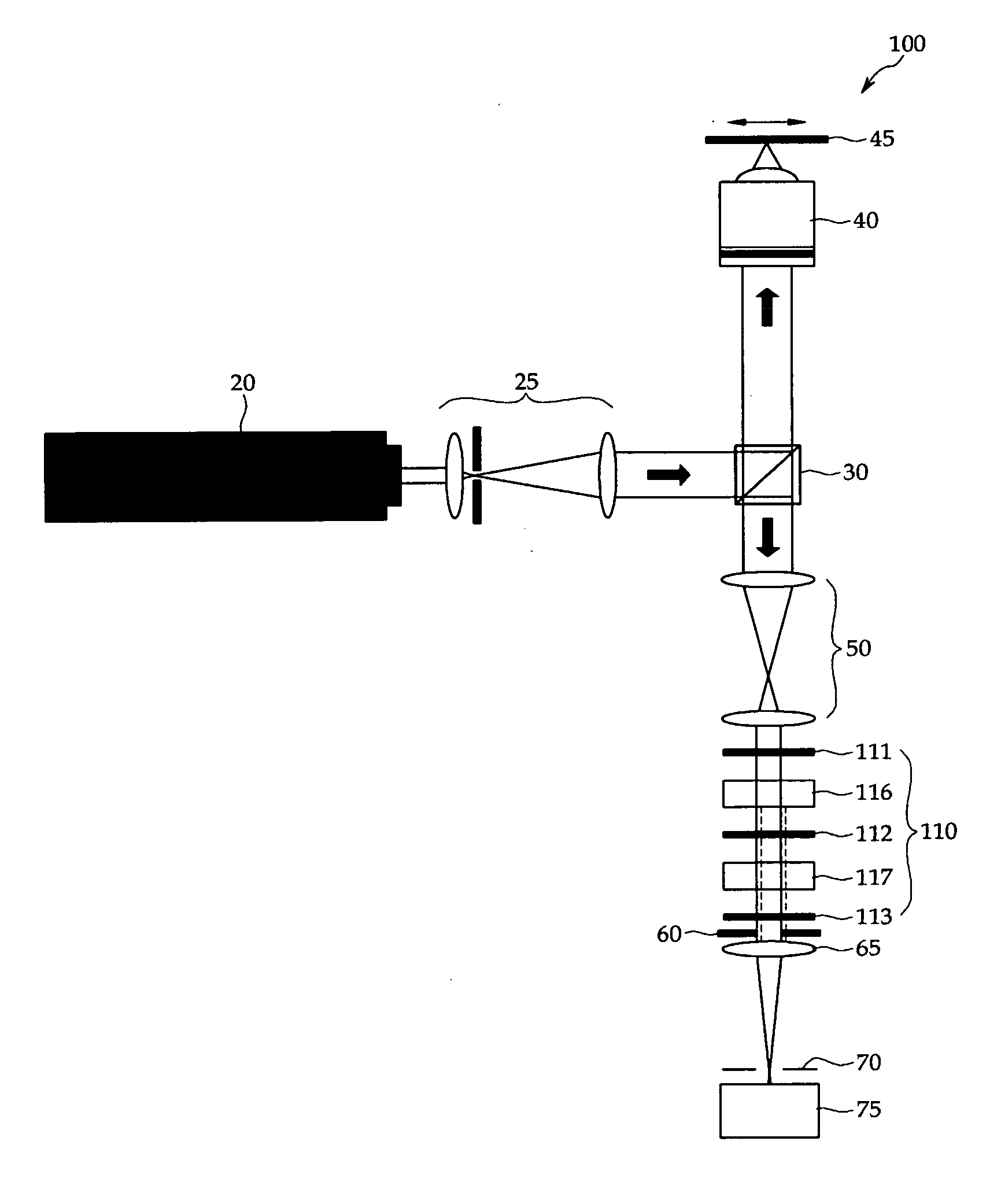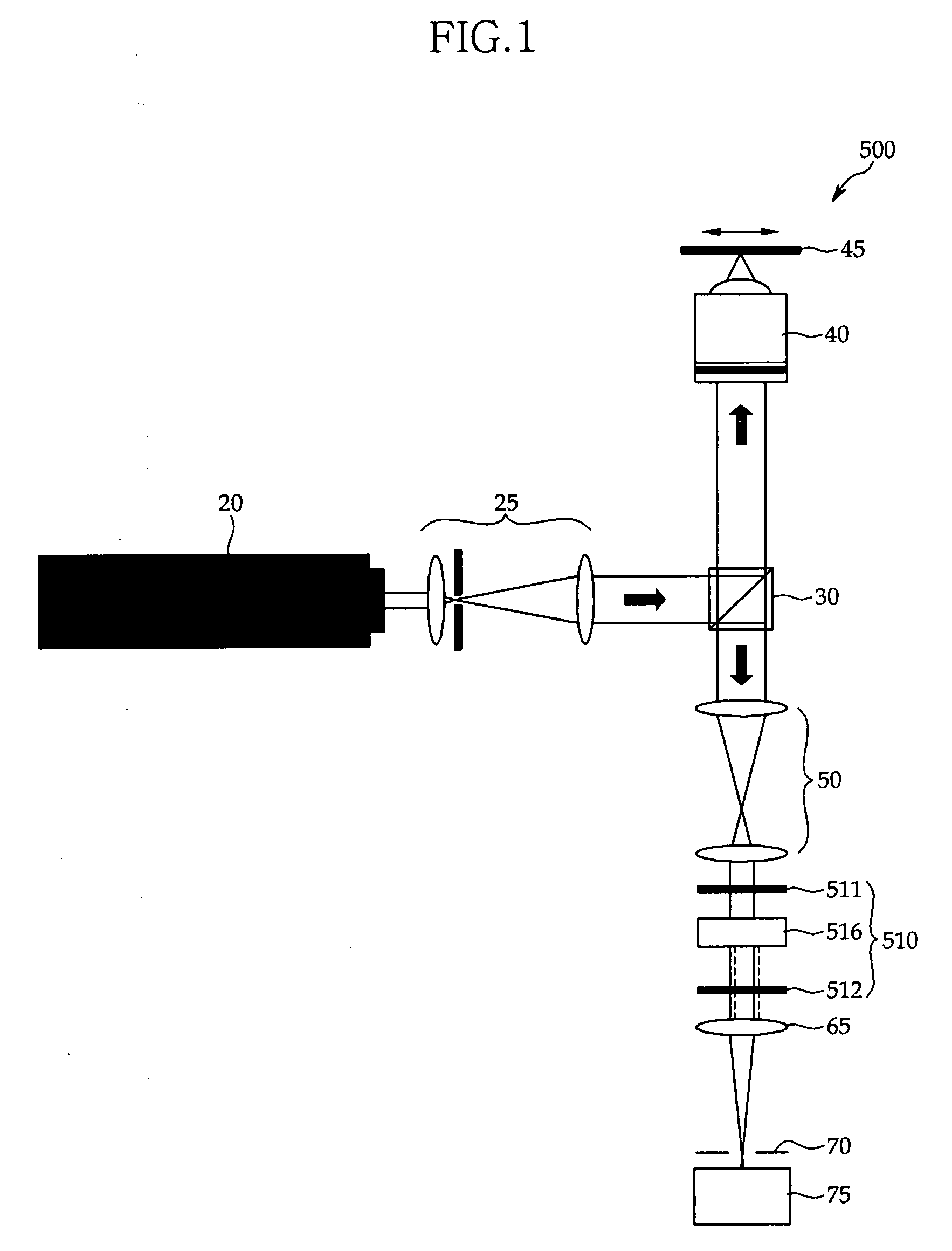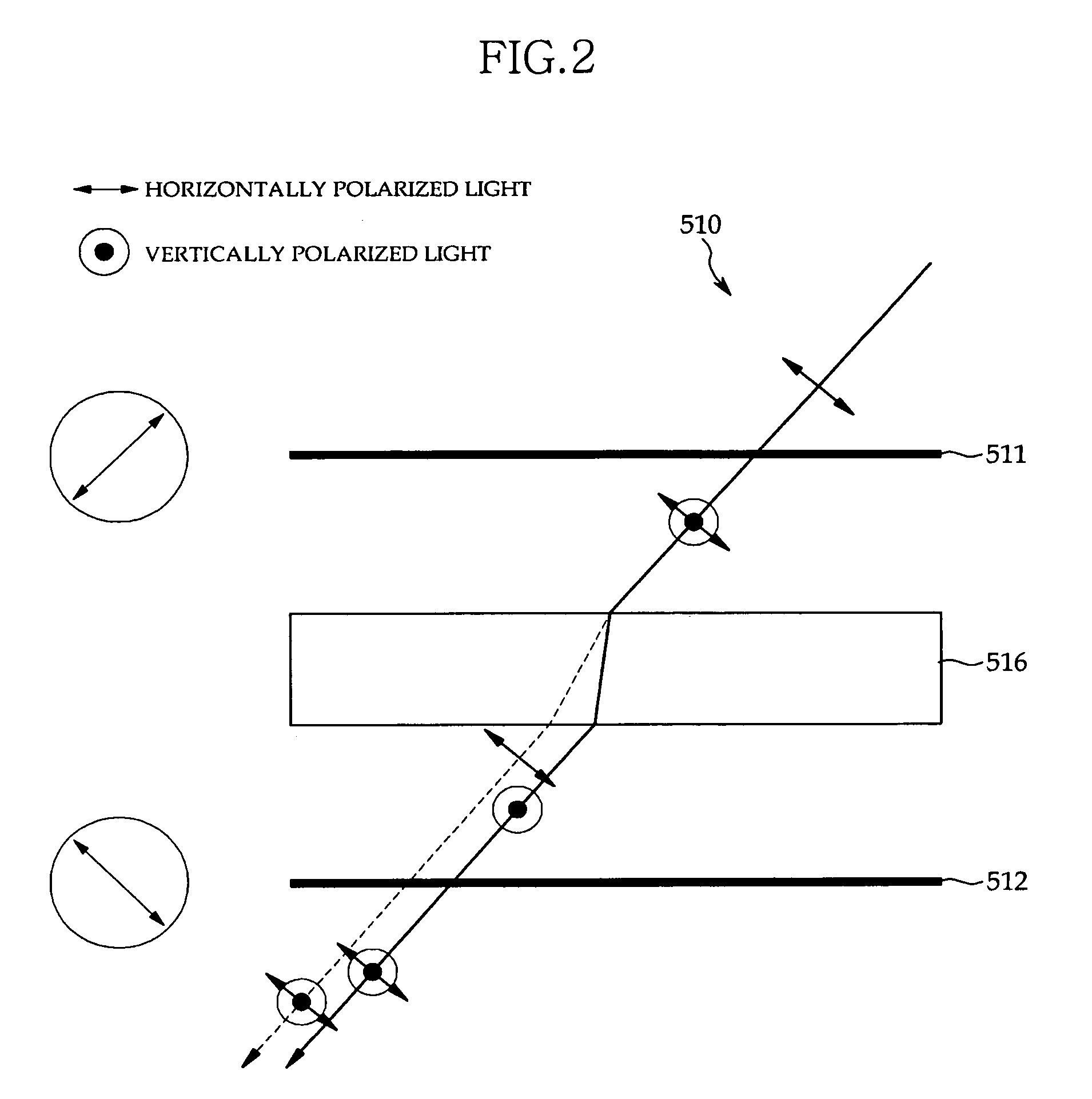Confocal self-interference microscopy from which side lobe has been removed
a self-interference microscopy and side lobe technology, applied in the field ofconfocal self-interference microscopy, can solve the problems of long test time, unsuitable for total inspection, and electron microscopy,
- Summary
- Abstract
- Description
- Claims
- Application Information
AI Technical Summary
Benefits of technology
Problems solved by technology
Method used
Image
Examples
first embodiment
[0051] [First Embodiment]
[0052]FIG. 6 shows the construction of a confocal self-interference microscopy 100 according to a first embodiment of the present invention.
[0053] As shown in FIG. 6, the confocal self-interference microscopy 100 according to the first embodiment of the present invention includes an illumination unit 20, a beam expander 25, a beam splitter 30, a condenser 40, a specimen 45, a telescope optical system 50, an iris 60, a focusing lens 65, a pin-hole aperture 70, an image detector 75, and a self-interference optical system 110. The self-interference optical system 110 includes polarizers 111, 112, and 113, and birefringence wave plates 116, 117.
[0054] The illumination unit 20 includes a light source for illuminating the specimen 45. The light source may include a common lighting that emits light having a variety of wavelengths, a laser that emits light having a specific wavelength, or the like.
[0055] The beam expander 25 serves to convert a circular wave, whi...
second embodiment
[0088] [Second Embodiment]
[0089]FIG. 9 shows the construction of a confocal self-interference microscopy 200 according to a second embodiment of the present invention.
[0090] As shown in FIG. 9, the confocal self-interference microscopy 200 according to the second embodiment of the present invention includes an illumination unit 20, a beam expander 25, a beam splitter 30, a condenser 40, a specimen 45, a telescope optical system 50, an iris 60, a focusing lens 65, a pin-hole aperture 70, an image detector 75, and a self-interference optical system 210. The self-interference optical system 210 includes polarizers 211, 212, 213, 214 and 215, and birefringence wave plates 216, 217, 218 and 219.
[0091] The confocal self-interference microscopy 200 according to the present embodiment is the same as the confocal self-interference microscopy 100 of FIG. 6 according to the first embodiment except for the self-interference optical system 210. Description on the redundant constituent elements...
third embodiment
[0118] [Third Embodiment]
[0119]FIG. 13 shows the construction of a confocal self-interference microscopy 300 according to a third embodiment of the present invention.
[0120] As shown in FIG. 13, the confocal self-interference microscopy 300 according to the third embodiment of the present invention includes an illumination unit 20, a beam expander 25, a beam splitter 30, a condenser 40, a specimen 45, a telescope optical system 50, a relay optical system 55, an iris 60, a focusing lens 65, a pin-hole aperture 70, a image detector 75, and a self-interference optical system 110. The self-interference optical system 110 includes polarizers 111, 112, and 113, and birefringence wave plates 116, 117.
[0121] The confocal self-interference microscopy 300 according to the present embodiment is the same as the confocal self-interference microscopy 100 of the first embodiment except that the relay optical system 55 is further included between the self-interference optical system 110 and the ir...
PUM
 Login to View More
Login to View More Abstract
Description
Claims
Application Information
 Login to View More
Login to View More - R&D
- Intellectual Property
- Life Sciences
- Materials
- Tech Scout
- Unparalleled Data Quality
- Higher Quality Content
- 60% Fewer Hallucinations
Browse by: Latest US Patents, China's latest patents, Technical Efficacy Thesaurus, Application Domain, Technology Topic, Popular Technical Reports.
© 2025 PatSnap. All rights reserved.Legal|Privacy policy|Modern Slavery Act Transparency Statement|Sitemap|About US| Contact US: help@patsnap.com



